Earth Day Spotlight: How Big Tech is Helping Big Game
Wildlife migration data from GPS-enabled collars can help improve public lands policy
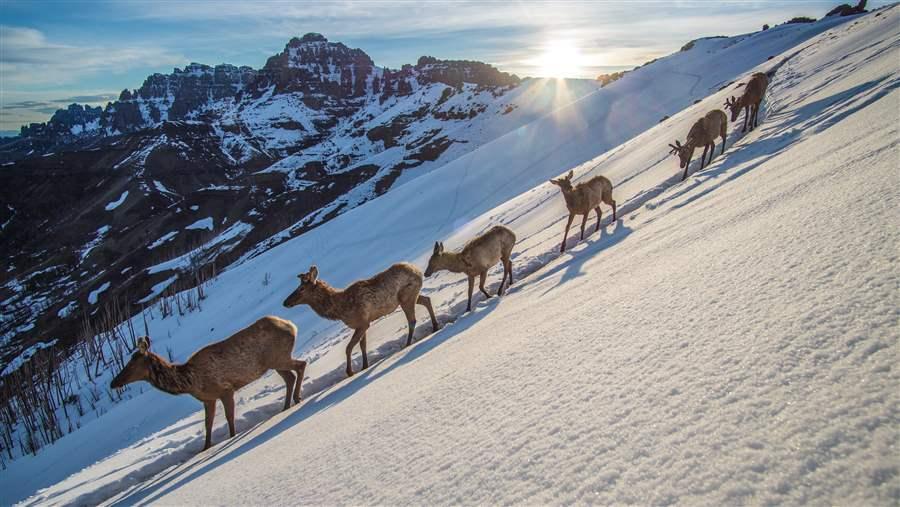
A herd of elk crosses a snowy hillside in Wyoming, following the same migration route that generations of its forebears used. Across the American West, routes for numerous species are threatened by development, including highways and fences.
Joe RiisEven before the first Earth Day in 1970, scientists, biologists, and environmental visionaries harnessed technologies to protect the natural world and the species that rely on it for survival—for example, research in the 1960s led to the 1972 ban of the pesticide DDT. On this 48th anniversary of the founding of Earth Day The Pew Charitable Trusts showcases one case of how scientists, communities, and federal agencies are leveraging technology to preserve wildlife and its habitat.
Migration corridors 101
Many of North America’s native wildlife, such as elk and deer, migrate to and from summer and winter grounds, tracking the seasons as they seek food and refuge. Over time, human population growth, highways, buildings, and energy development have forced animals to alter those routes, putting a strain on how some species move and survive.
Now, advances in wildlife tracking and analysis are helping researchers document big-game migration, and the impact of habitat fragmentation on the wildlife that help define the American West.
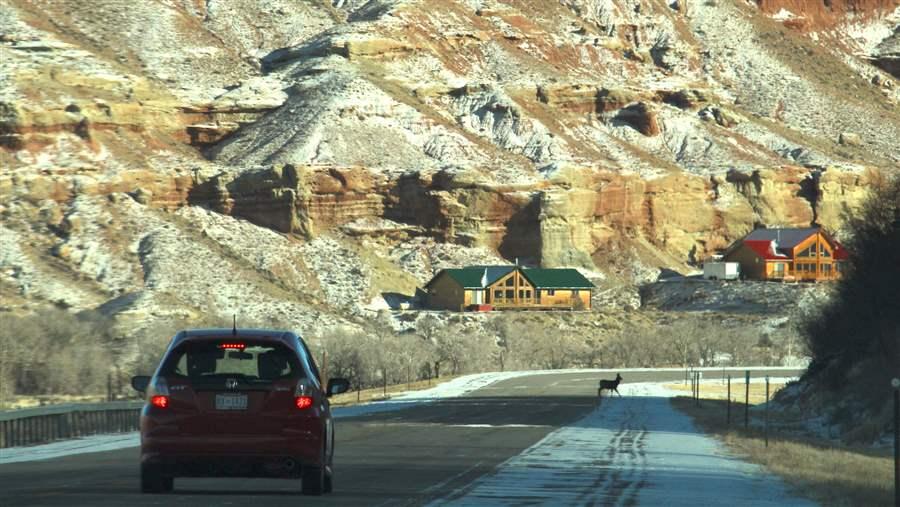
Mule deer crossing in Dubois, Wyoming. Wildlife depend on unfragmented habitat, including migration corridors, for survival.
Greg NickersonThe intersection of technology and wildlife migrations
By fitting animals with GPS-enabled collars, scientists are getting real-time information about where, when, and how wildlife migrate. For example, the collars revealed that mule deer in Wyoming travel more than 300 miles round trip annually from the low-elevation winter range of the Red Desert to the mountain slopes of the Hoback Basin. And biologists believed that was the extent of the migration. But in April they made the notable discovery that at least one mule deer—Doe 255—migrated nearly 100 miles farther, prompting additional questions about the extent of this remarkable journey.
To date, the 300-mile round-trip migration is the longest known land-based migration in the contiguous U.S. The tracking devices have also exposed some of the manmade challenges, including over 100 fences and several highways, those mule deer must overcome in order to complete their ingrained migration.
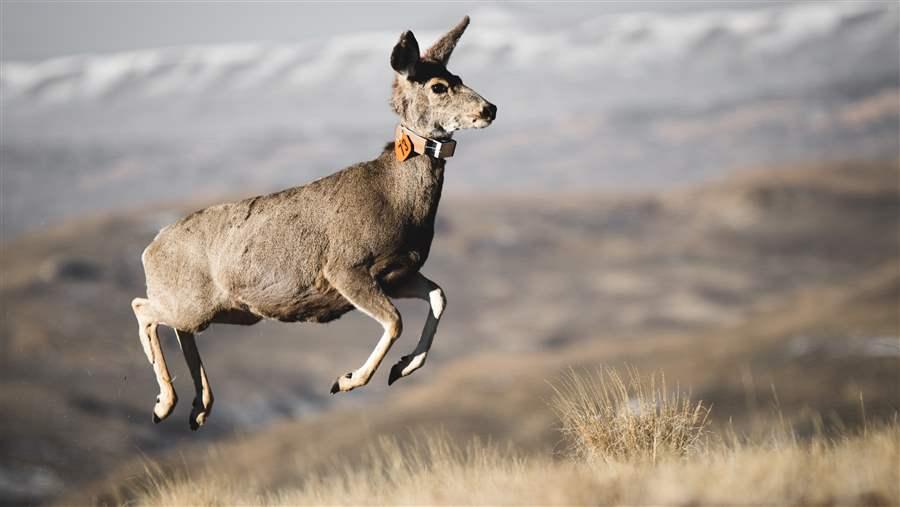
A mule deer (pictured above) released after having a GPS tracker attached by field researchers.
Ben KraushaarPromising policy changes
On Feb. 9, Interior Secretary Ryan Zinke took a positive step toward protecting migration corridors by signing Secretarial Order 3362, which directs Department of the Interior bureaus to collaborate with states to identify big-game routes and winter range on public lands. Importantly, the order, “Improving Habitat Quality in Western Big-Game Winter Range and Migration Corridors,” ensures that migration science is considered in federal land-use plans. Ultimately, however, the success of the directive hinges on how it is implemented. For example, for the order to genuinely protect wildlife migration routes, federal and state officials must first determine if and how energy development should occur in areas near migration routes.
Wildlife corridor conservation has enjoyed bipartisan support across the West for over a decade. Wyoming is leading the charge, with advanced policies on and approaches to corridor identification.
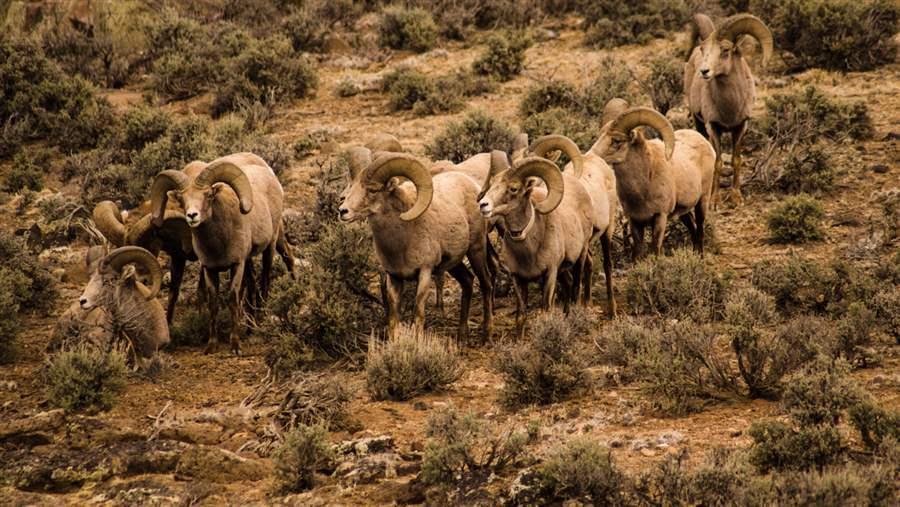
Mule deer, pronghorn antelope, and elk aren’t the only big game that migrate across public lands. Bighorn sheep (pictured here in New Mexico), moose, and other species also have their own time-honored corridors.
BLM New MexicoExperts share information on technology and science
Through a series of workshops, Pew and its partners are joining state wildlife managers and scientists to spread the word to policymakers about emerging research, management, and science on wildlife migrations. At the first workshop, held in Oregon in October, the group shared information and best practices from the state and federal levels. The gatherings also featured training for wildlife managers in the latest technologies for identifying key wildlife corridors. More meetings are scheduled throughout 2018.
This evolving experience with wildlife corridor management is a good example of how science, technology, and forward-thinking policy can converge to help solve a major environmental challenge.
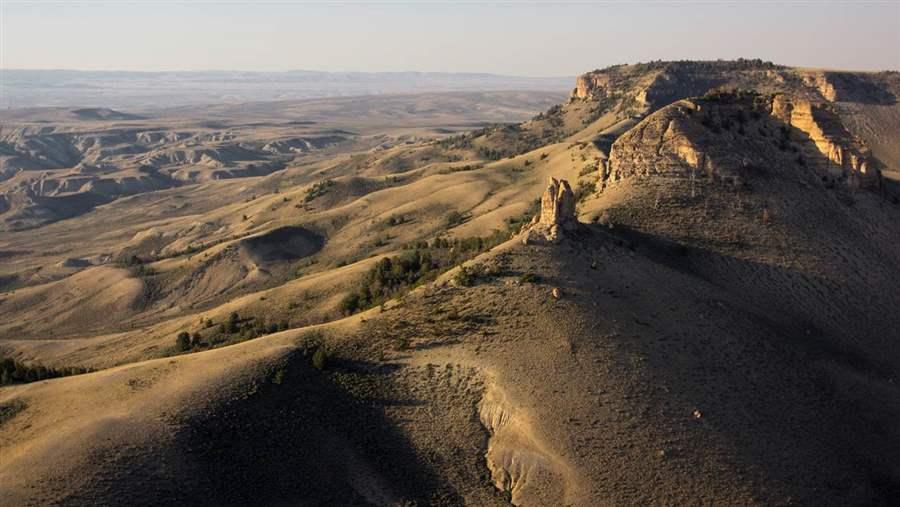
Sportsmen, small-business owners, ranchers, and other stakeholders all support conserving wildlife corridors that facilitate big-game migrations.
Wyoming Outdoor CouncilKen Rait is a director and Matt Skroch is an officer with The Pew Charitable Trusts’ western lands initiative.






